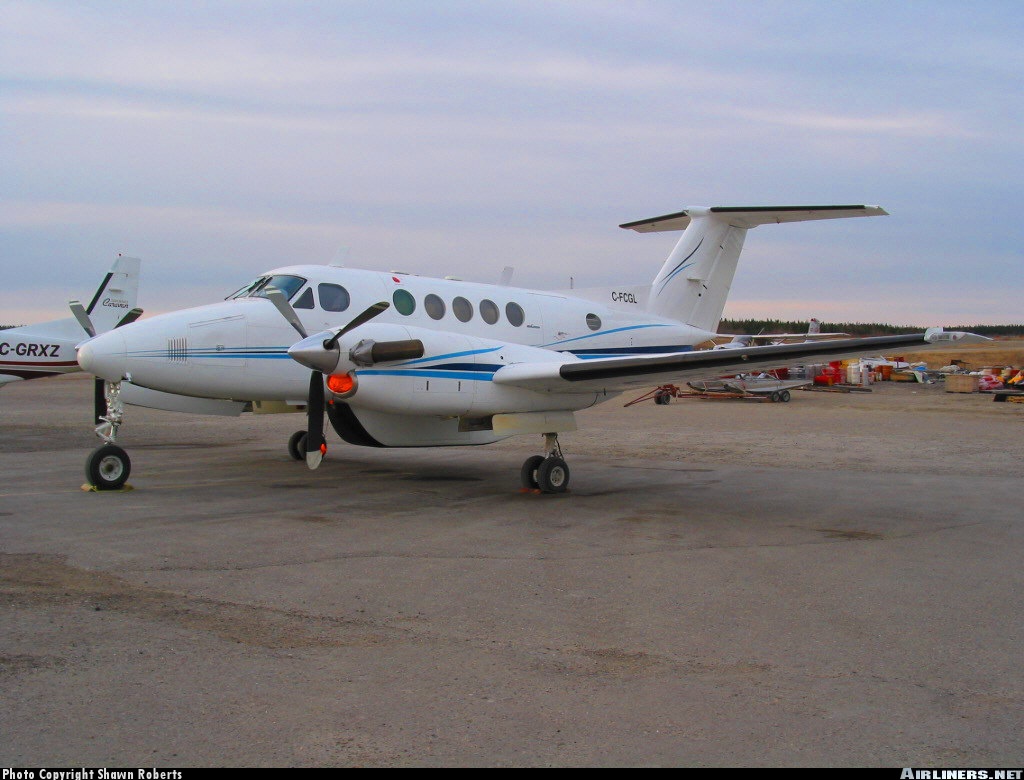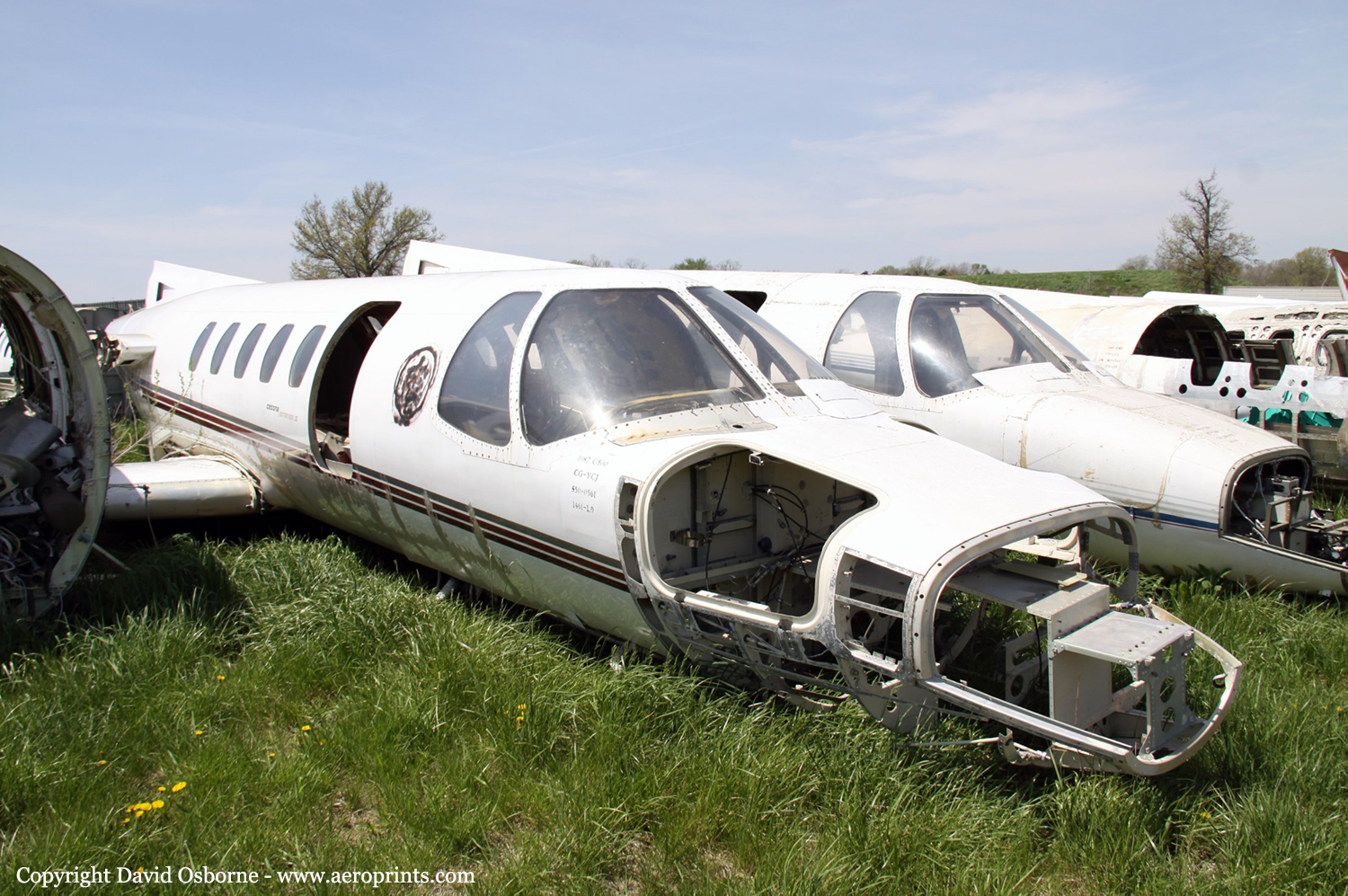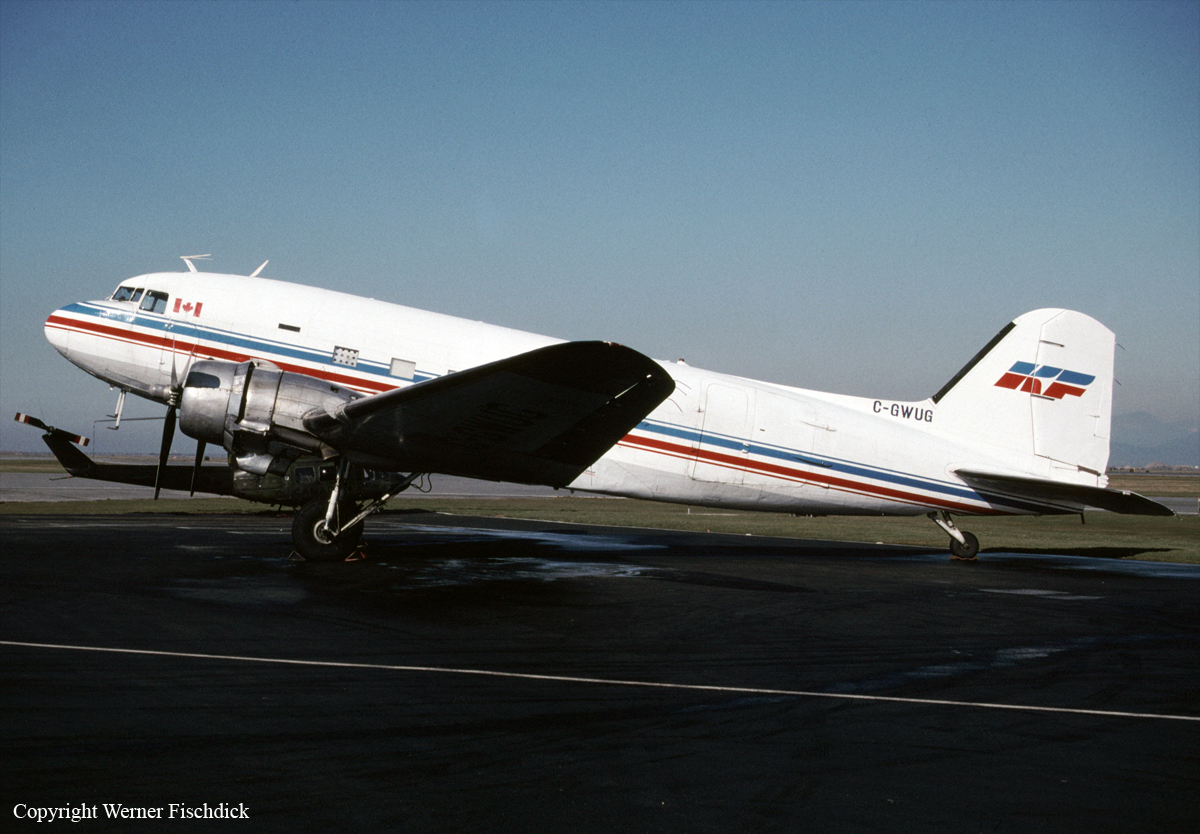Zone
Crash of a Beechcraft 200 Super King Air in Squamish: 2 killed
Date & Time:
Jul 28, 2005 at 0840 LT
Registration:
C-FCGL
Survivors:
No
Schedule:
Vancouver – Smithers
MSN:
BB-190
YOM:
1976
Flight number:
NT202
Crew on board:
2
Crew fatalities:
Pax on board:
0
Pax fatalities:
Other fatalities:
Total fatalities:
2
Captain / Total hours on type:
100.00
Copilot / Total hours on type:
80
Circumstances:
A Raytheon Beechcraft King Air 200 (registration C-FCGL, serial number BB190) operating as NTA202 (Northern Thunderbird Air), departed Vancouver, British Columbia, at 0824 Pacific daylight time on 28 July 2005 for a visual flight rules flight to Smithers, British Columbia, with a crew of two on board. The aircraft did not arrive at its destination, and a search was commenced later that same day. The aircraft was found on 30 July 2005. The crash site was in a narrow canyon at an elevation of about 3900 feet above sea level, in an area of steeply rising terrain. Both occupants were fatally injured. A post-crash fire destroyed most of the aircraft. The emergency locator transmitter was destroyed in the fire and no signal was detected. The crash occurred at about 0840 Pacific daylight time.
Probable cause:
Findings as to Causes and Contributing Factors:
1. The aircraft was flown up a narrow canyon into rapidly rising terrain for reasons that could not be determined. The aircraft’s proximity to terrain and the narrowness of the canyon precluded a turn, and the aircraft’s climb rate was insufficient to clear the rising terrain.
2. The pilot decision-making training received by the crew members was ineffective because they were unprepared for the unique hazards and special operating techniques associated with flying low in mountainous terrain.
Finding as to Risk:
1. The company operations manual (COM) gave no guidance to the crew for the operation of a visual flight rules (VFR) flight, except for the provision that it should not be conducted closer to obstacles than 500 feet vertically and horizontally.
1. The aircraft was flown up a narrow canyon into rapidly rising terrain for reasons that could not be determined. The aircraft’s proximity to terrain and the narrowness of the canyon precluded a turn, and the aircraft’s climb rate was insufficient to clear the rising terrain.
2. The pilot decision-making training received by the crew members was ineffective because they were unprepared for the unique hazards and special operating techniques associated with flying low in mountainous terrain.
Finding as to Risk:
1. The company operations manual (COM) gave no guidance to the crew for the operation of a visual flight rules (VFR) flight, except for the provision that it should not be conducted closer to obstacles than 500 feet vertically and horizontally.
Final Report:


Crash of a Cessna 550 Citation II in Sandspit
Date & Time:
Nov 12, 2002 at 2052 LT
Registration:
C-GYCJ
Survivors:
Yes
Schedule:
Vancouver - Sandspit
MSN:
550-0561
YOM:
1987
Crew on board:
2
Crew fatalities:
Pax on board:
2
Pax fatalities:
Other fatalities:
Total fatalities:
0
Captain / Total hours on type:
1450.00
Copilot / Total hours on type:
850
Circumstances:
The aircraft departed Vancouver International Airport, British Columbia, on a medical evacuation flight to the Sandspit Airport in the Queen Charlotte Islands, British Columbia. On board the aircraft were two pilots and a team of two Advanced Life Support Paramedics. When the aircraft arrived at Sandspit, the surface wind was strong, gusty, and across the runway. The crew conducted an instrument approach to Runway 30, and just before touchdown the aircraft's nose pitched down; the captain believed that the nosewheel, and then the main gear, collapsed as the aircraft slid on its belly. The crew carried out an evacuation and proceeded to the airport terminal building. When they returned to the aircraft to retrieve their belongings, the crew discovered that the gear was in the up position, as was the landing gear selector. The accident occurred at 2052 Pacific standard time. There were no injuries. The aircraft was substantially damaged.
Probable cause:
Findings as to causes and contributing factors:
1. The crew did not complete the before-landing checks, ignored aural warnings, and did not lower the landing gear, which resulted in a gear-up landing.
Findings as to risk:
1. The aircraft was not equipped with a GPWS, which could have prevented this accident.
2. The before-landing checklist in use did not reflect the AFM requirement that the speed brakes should be retracted prior to 50 feet.
1. The crew did not complete the before-landing checks, ignored aural warnings, and did not lower the landing gear, which resulted in a gear-up landing.
Findings as to risk:
1. The aircraft was not equipped with a GPWS, which could have prevented this accident.
2. The before-landing checklist in use did not reflect the AFM requirement that the speed brakes should be retracted prior to 50 feet.
Final Report:

Crash of a Douglas DC-3C in Mayne Island: 2 killed
Date & Time:
Jan 13, 1999 at 0633 LT
Registration:
C-GWUG
Survivors:
No
Schedule:
Vancouver - Victoria
MSN:
16215/32963
YOM:
1945
Flight number:
KFA301
Crew on board:
2
Crew fatalities:
Pax on board:
0
Pax fatalities:
Other fatalities:
Total fatalities:
2
Captain / Total hours on type:
9500.00
Copilot / Total hours on type:
430
Aircraft flight hours:
20123
Circumstances:
The accident aircraft, a Douglas DC-3C, C-GWUG, was owned and operated by Kelowna Flightcraft Air Charter Ltd. (Kelowna Flightcraft) and was under charter to Purolator Courier Ltd. (Purolator). Since April 1998, the aircraft had been dedicated to transporting cargo on a route between Vancouver and Nanaimo, British Columbia. On occasion, it was also used for flights to Victoria to meet Purolator=s scheduling or cargo-loading contingencies. On the day of the accident, the aircraft, operating as KFA300, was rerouted and tasked to fly from Vancouver to Victoria and then proceed to Nanaimo. This change was precipitated by the delayed arrival of Purolator=s Boeing 727 at Vancouver because of inclement weather in the Toronto/Hamilton, Ontario, area. Warning of this route change was passed to the crew members with their pre-flight planning package, which included filed instrument flight rules (IFR) flight plans for the Vancouver-to-Victoria and Victoria-to-Nanaimo legs of the trip. The captain of the occurrence flight cancelled his IFR flight plan and refiled visual flight rules (VFR) on first contact with air traffic control. Vancouver tower cleared KFA300 for take-off at 0622 Pacific standard time (PST) from runway 26L. After take-off, the aircraft turned left on a track toward Active Pass, as seen in Figure 1. During the departure climb, the captain requested an altitude of 1000 feet above sea level (asl); the tower controller approved this request. Recorded radar data indicate that the aircraft climbed to and levelled at 1000 feet asl and then accelerated to a steady en route ground speed of 130 knots. The aircraft left the Vancouver control zone at 0626 and entered Class E (controlled) airspace. There are no special requirements for VFR aircraft operating within this class of airspace, nor are any specific services required of the air traffic control system. As the aircraft approached the Gulf Islands, it descended slightly and remained level at 900 feet asl. It crossed about 0.25 nautical mile (nm) west of the Active Pass non-directional beacon (NDB) at 0632 while remaining steady at 130 knots (ground speed) and level at 900 feet asl. At 0633:04, the aircraft descended to 800 feet asl for about nine seconds. The last radar data show the aircraft at 900 feet asl and 130 knots. The last radar-depicted position of the aircraft is on a bearing of 189 degrees (true) and 21.8 nm from the Sea Island radar source, coincident with the crash location.
Probable cause:
Findings as to Causes and Contributing Factors:
1. The accident flight was not conducted in accordance with the night obstacle clearance requirements of Canadian Aviation Regulation (CAR) 705.32.
2. The Kelowna Flightcraft company operations manual did not reflect the restrictive conditions imposed on night visual flight rules (VFR) flight by CAR 705.32. Such information might have
prevented the accident by ensuring the crew's awareness of those night obstacle clearance standards.
3. As the aircraft approached Mayne Island, it encountered a low cloud ceiling that was based about 800 feet and that reduced visual reference with the surface.
4. When the aircraft struck trees, it was being flown in controlled, level flight at an altitude below the surrounding terrain.
5. The aircraft was not equipped with a ground proximity warning system or any other similar system that could warn the crew of an impending collision with terrain. Such systems were not required by regulation.
Findings as to Risk:
1. Kelowna Flightcraft flight operations personnel were not aware that most of the DC-3 flights were being conducted under VFR.
2. First responders were not aware of the presence of the dangerous goods and were therefore at increased risk during their response activities on the site.
Other Findings:
1. Transport Canada officials responsible for monitoring this operation were not aware that most of the DC-3 flights were being conducted under VFR at night and below the required obstacle
clearance altitudes.
1. The accident flight was not conducted in accordance with the night obstacle clearance requirements of Canadian Aviation Regulation (CAR) 705.32.
2. The Kelowna Flightcraft company operations manual did not reflect the restrictive conditions imposed on night visual flight rules (VFR) flight by CAR 705.32. Such information might have
prevented the accident by ensuring the crew's awareness of those night obstacle clearance standards.
3. As the aircraft approached Mayne Island, it encountered a low cloud ceiling that was based about 800 feet and that reduced visual reference with the surface.
4. When the aircraft struck trees, it was being flown in controlled, level flight at an altitude below the surrounding terrain.
5. The aircraft was not equipped with a ground proximity warning system or any other similar system that could warn the crew of an impending collision with terrain. Such systems were not required by regulation.
Findings as to Risk:
1. Kelowna Flightcraft flight operations personnel were not aware that most of the DC-3 flights were being conducted under VFR.
2. First responders were not aware of the presence of the dangerous goods and were therefore at increased risk during their response activities on the site.
Other Findings:
1. Transport Canada officials responsible for monitoring this operation were not aware that most of the DC-3 flights were being conducted under VFR at night and below the required obstacle
clearance altitudes.
Final Report:

Crash of a Cessna 208B Super Cargomaster in Victoria: 2 killed
Date & Time:
Nov 23, 1998 at 0030 LT
Registration:
N9352B
Survivors:
No
Schedule:
Vancouver - Victoria
MSN:
208-0061
YOM:
1987
Flight number:
RXX434
Crew on board:
2
Crew fatalities:
Pax on board:
0
Pax fatalities:
Other fatalities:
Total fatalities:
2
Captain / Total hours on type:
400.00
Aircraft flight hours:
6717
Circumstances:
Regency Express Air Operations Flight 434, a Cessna 208 Caravan (serial number 208B0061), was en route from Vancouver International Airport to Victoria International Airport, British Columbia, on a night visual flight rules (VFR) flight when it collided with trees on Saltspring Island, about five nautical miles (nm) north of the Victoria International Airport. The aircraft broke apart on impact and a post-crash fire occurred. The two pilots, who were the sole occupants of the aircraft, sustained fatal injuries, and the aircraft was destroyed. The accident occurred at 0030 Pacific standard time (PST).
Probable cause:
Findings as to Causes and Contributing Factors:
A. Although weather information was available by radio from the Vancouver FSS specialists or from the Victoria Terminal controllers, there is no indication that the pilots requested weather updates from either of these units.
B. The crew of RXX434 would have encountered the lower ceiling in the vicinity of Beaver Point. This lower layer of cloud would have restricted the crew's view of the ground lighting and reduced the ambient lighting available to navigate by visual means.
C. With the loss of ground references, it is unlikely that the crew would have been able to perceive the divergence of the aircraft's flight path away from its intended track by visual means.
D. The crew was unable to maintain separation between the aircraft and the terrain by visual means.
E. The published VFR arrival and departure routes for Victoria were not consistent with obstacle clearance requirements for commercial operators.
F. Regency Express Air Operations' crew manual suggested an en route altitude of 1,500 feet for this particular flight. That route and altitude combination is not consistent with published obstacle clearance requirements.
Other Findings:
1. At the time the crew completed their flight planning, the weather at the departure airport of Vancouver and the arrival airport of Victoria was suitable for a night VFR flight.
2. An amended terminal forecast for Victoria indicating the presence of a temporary ceiling at 2,000 feet asl was issued after the crew had completed their preflight planning activities.
3. The regulation requiring GPWS equipment does not apply to air taxi operations because the aircraft used in those operations do not meet weight or propulsion criteria.
A. Although weather information was available by radio from the Vancouver FSS specialists or from the Victoria Terminal controllers, there is no indication that the pilots requested weather updates from either of these units.
B. The crew of RXX434 would have encountered the lower ceiling in the vicinity of Beaver Point. This lower layer of cloud would have restricted the crew's view of the ground lighting and reduced the ambient lighting available to navigate by visual means.
C. With the loss of ground references, it is unlikely that the crew would have been able to perceive the divergence of the aircraft's flight path away from its intended track by visual means.
D. The crew was unable to maintain separation between the aircraft and the terrain by visual means.
E. The published VFR arrival and departure routes for Victoria were not consistent with obstacle clearance requirements for commercial operators.
F. Regency Express Air Operations' crew manual suggested an en route altitude of 1,500 feet for this particular flight. That route and altitude combination is not consistent with published obstacle clearance requirements.
Other Findings:
1. At the time the crew completed their flight planning, the weather at the departure airport of Vancouver and the arrival airport of Victoria was suitable for a night VFR flight.
2. An amended terminal forecast for Victoria indicating the presence of a temporary ceiling at 2,000 feet asl was issued after the crew had completed their preflight planning activities.
3. The regulation requiring GPWS equipment does not apply to air taxi operations because the aircraft used in those operations do not meet weight or propulsion criteria.
Final Report:



